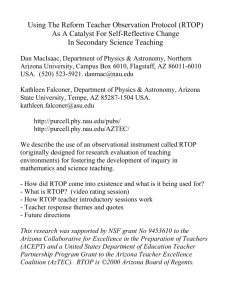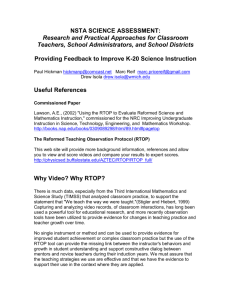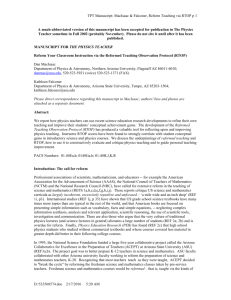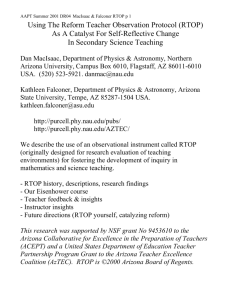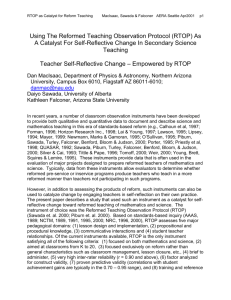Appendix 12.1. Examples of Look-Fors When visitors enter your
advertisement
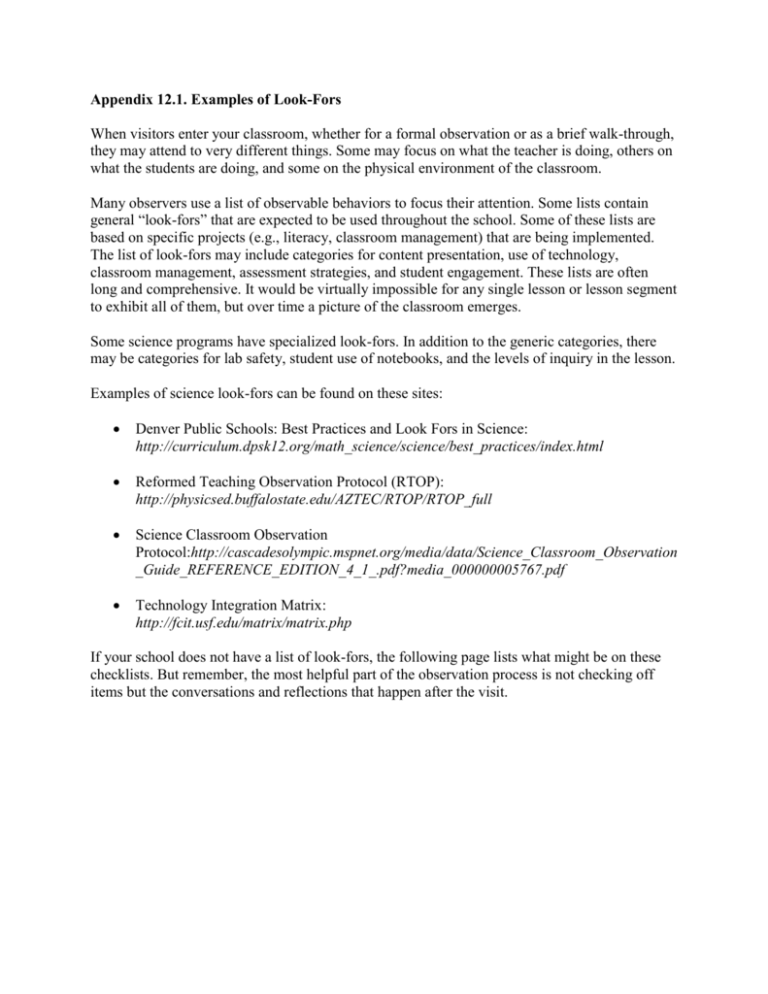
Appendix 12.1. Examples of Look-Fors When visitors enter your classroom, whether for a formal observation or as a brief walk-through, they may attend to very different things. Some may focus on what the teacher is doing, others on what the students are doing, and some on the physical environment of the classroom. Many observers use a list of observable behaviors to focus their attention. Some lists contain general “look-fors” that are expected to be used throughout the school. Some of these lists are based on specific projects (e.g., literacy, classroom management) that are being implemented. The list of look-fors may include categories for content presentation, use of technology, classroom management, assessment strategies, and student engagement. These lists are often long and comprehensive. It would be virtually impossible for any single lesson or lesson segment to exhibit all of them, but over time a picture of the classroom emerges. Some science programs have specialized look-fors. In addition to the generic categories, there may be categories for lab safety, student use of notebooks, and the levels of inquiry in the lesson. Examples of science look-fors can be found on these sites: Denver Public Schools: Best Practices and Look Fors in Science: http://curriculum.dpsk12.org/math_science/science/best_practices/index.html Reformed Teaching Observation Protocol (RTOP): http://physicsed.buffalostate.edu/AZTEC/RTOP/RTOP_full Science Classroom Observation Protocol:http://cascadesolympic.mspnet.org/media/data/Science_Classroom_Observation _Guide_REFERENCE_EDITION_4_1_.pdf?media_000000005767.pdf Technology Integration Matrix: http://fcit.usf.edu/matrix/matrix.php If your school does not have a list of look-fors, the following page lists what might be on these checklists. But remember, the most helpful part of the observation process is not checking off items but the conversations and reflections that happen after the visit. Examples of Look-Fors Student Behaviors Performing inquiry/investigations (see Appendix 12.2 for a description) Exhibiting safe lab behaviors Writing Practicing new skills Creating original work and projects Taking a test or quiz Completing worksheets or study guides Recording information in notebooks Reading Listening/responding to the teacher Asking questions Speaking to the class Working independently Working in groups Working at the board or overhead projector Using technology: __________________________________ Following classroom routines and rules Behaving during down time or when off task Level of Questioning or Assignments Rote or knowledge-level questions and activities Higher-level questions and activities Use of wait time Students question and respond to each other Teacher Behaviors Using lecture/direct instruction/demonstration Leading a large-group discussion Helping individual students Working with groups of students Reading to students Circulating among students Standing at the board or projector Using or modeling technology: ______________________ Making connections to prior learning Making connections to student interests Using formative assessments Modeling safe lab behaviors Using bell-ringers (warm-ups, exit activities) Greeting students at the door Providing feedback Classroom Learning goals/objectives posted Safe procedures used Safety rules posted Routines in place for transitions Routines in place for accessing materials Student work on display Use of time-management strategies Atmosphere of mutual respect Seating arrangement appropriate for task
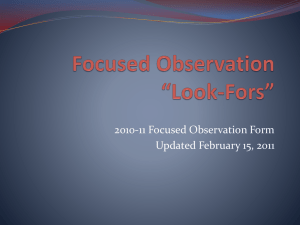
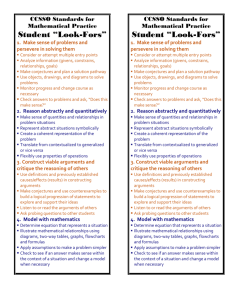


![FID Application Checklist[1]](http://s3.studylib.net/store/data/006756416_1-29b03ce29081ceb3d2d811cda22c5a0d-300x300.png)

